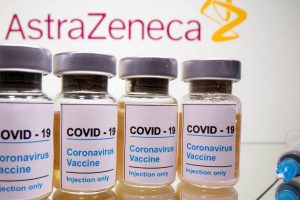Chennai, India – The arrival of Zika, seemingly out of nowhere, on the global health scene and hitting media headlines around the world almost daily, as well as the appearance of Yellow Fever virus for the first time in China and Vietnam — after stepping out of its ancestral home in Africa and Latin America — are bad news for the world.
It is specially so for developing countries where Aedes aegypti — the mosquito species that spread these and also Dengue and Chikungunya viruses (all known as arbo- or Group-B viruses) — is profusely present.But what is more painful to entomologists like myself is the knee-jerk reaction by health authorities — including the US Food and Drug Administration (FDA) and the Geneva-based World Health Organization (WHO) — proclaiming genetic modification technologies as a magic wand to control the population of this mosquito species.
The FDA on March 11 announced that the proposed release by the UK company Oxitec of its genetically modified (GM) Aedes mosquitoes into an area in Florida Keys would have “no significant impact” on the environment.
The WHO on March 21 followed suit with “a positive recommendation” in support of OX513A, the GM mosquito from Oxitec, now a subsidiary of New York stock exchange-listed Intrexon Corporation.
It is surprising that the GM strategy is still on WHO’s agenda.
In 1975, the WHO was forced by the Government of India to wind up its Genetic Control of Mosquitoes Unit (GCMU) in New Delhi for reasons mentioned in two voluminous reports of a Parliamentary Committee** and a third report by an expert committee set up by the then Prime Minister of India, Mrs. Indira Gandhi, that included geneticist Dr. M. S. Swaminathan and defense advisor Dr. M. G. K. Menon, both world-renowned scientists.
The net result was that the GCMU’s planned release of millions of modified Aedes aegypti mosquitoes in urban Sonepat, north of New Delhi, was declared to be not in the national interest and aborted.
That was a turning point in the history of the Indian Council of Medical Research (ICMR) which decided to focus on environmental control to tackle mosquito-borne diseases and created an entirely new institute — Vector Control Research Centre — in Pondicherry for this purpose.
[Recently, there have been a number of warnings and cautionary advisories in the United States on the potential dangers of bio-terrorism using the release of GM mosquitoes carrying arbo-viruses. A simple Google search for โ€ Bio-terrorism’ and โ€ Aedes aegypti’ brings up a large number of hits, and references to publications in scientific journals. SUNS]
As a scientist associated with GCMU from the start, I can say with confidence that the so-called Sterile Male Technique (SMT) that forms the basis of genetic control strategies, including that of Oxitec, cannot work in the case of mosquitoes for reasons detailed herein below.
The SMT for insect control requires release of competitive, sterile males in vast numbers (overwhelming the number of wild males) into the natural habitat of the target species.
It no doubt worked in the case of screw worm, and Mediterranean fruit flies. For these agricultural pests, whose females cause no damage, sex separation systems are not essential.
However, in the case of mosquitoes, it is essential to ensure that only males — and no females, not even sterile females — are released because it is the female mosquitoes (including sterile females) that bite and transmit diseases.
The trouble is, whichever method is used, one cannot get 100% separation of males in the case of mosquitoes. At the GCMU, the sexes were separated using differences in pupal size and there was contamination of the female pupae to the extent of up to 5%.
The SMT requires that a very large number of males — a ratio of 5 sterile males to 1 wild female — have to be used. This means one will end up releasing a large number of females — at least 20 per cent — which can bite people, and spread infection.
Apart from this, an extensive study carried out by GCMU, whose results were published in the WHO bulletin and WHO/VBC mimeographed series, had shown that the sterile males released were unable to compete with wild males, thereby shaking the very basis of the control strategy.
Oxitec says it modifies Aedes aegypti mosquitoes with a synthetic DNA. After release, these Oxitec OX513A males mate with wild females and their progeny inherit the “self-limiting gene” and die before becoming adults.
That is the theory.
Oxitec conducted its first open release experiments of its GM mosquitoes in the Cayman Islands in 2009-10 and in Malaysia in 2010-11. Both countries have halted further releases; but in February 2011, Oxitec began larger-scale experiments in Brazil — the current hotspot of Zika.
Discovered in Uganda, Zika has been known for more than 70 years. As Kalyan Banerjee, former director of India’s National Institute of Virology in Pune, rightly asked: Why are birth defects and neurological problems reported only now? What made the virus virulent?
A suggestion by some scientists that the Zika outbreak in Brazil could have been sparked by the release of Oxitec’s GM mosquitoes in 2012 was quickly dismissed as a “conspiracy theory”.
Is it really? In my opinion, Oxitec’s approach is littered with several unknowns.
It claims that its GM mosquitoes mate with wild females and produce offspring which live up to pupal stage and then die before becoming adult mosquitoes. But in fact, 3-4% of the first generation mosquitoes actually survive.
What about the risk of being bitten by the surviving GM mosquito offspring or by the GM females released along with the males? How can one be sure that the synthetic DNA causes no harm when transferred into humans by its mosquitoes?
Also requiring attention is the point raised by the UK-based Gene Watch that the GM insects, mass produced in factories using antibiotics as an additive in their feed, “could lead to drug resistance in bacteria, leading to the spread of super-bugs as billions of insects are released into the environment in future.”
There are hundreds of Aedes species in India. Of these, Aedes aegypti and Aedes albopictus are two important recognised vectors, and Dengue and Chikungunya viruses have been isolated from them.
Apart from the attempts to market use in India of GM sterile mosquitoes to tackle them, another idea being promoted by some scientists is using Wolbachia, a common bacterium, to infect and control mosquitoes or Dengue. In the Eltonian ecological chain, there are so many parasites and pathogens in the natural cycle. Wolbachia is one of them, and stops the virus from replicating the mosquitoes that transmit the disease. The idea is to reduce infections in humans by getting Wolbachia-infected mosquitoes to mate and pass the bacterium to future generations. If the method works, vast numbers of wild mosquitoes will eventually carry Wolbachia and thus be unable to transmit dengue, it is claimed.
The prospects of success of this idea, however, is a fantasy like the Laven’s Cytoplasmic incompatibility experiment that was tried and proved to be a failure in GCMU.
In sum, releases of GM mosquitoes carry inherent dangers and developing countries need to be forewarned about this commercial/science lobby advocating this technology.
India and the Indian market are very much in the “sights” of Oxitec which is hoping to sell the world its GM mosquitoes, similar to what pesticide companies do at present.
Oxitec has already established a joint venture with Gangabishan Bhikulal Investment and Trading Limited (GBIT) in Mumbai to bring its technology to India and has reportedly applied to the regulators for field testing of its strains.
Given the hidden dangers and India’s previous experience with GCMU, one would hope the Indian Council of Medical Research (ICMR) will reject any fresh move to revive the genetic control approach.
At this juncture I cannot help recalling the wise words of C. G. Pandit, India’s first chief of ICMR and an authority on Yellow Fever, who said: “The presence of Aedes aegypti in small numbers may have some beneficial effects (for Indians). This mosquito may be causing certain diseases which gives cross-protection to Yellow Fever.”
I fully agree with Jembulingam Pillai of New Zealand, former chair of the WHO Expert Committee on Biological Control of mosquito Vectors of disease, who has advised ICMR as follows: “I can categorically state that genetic control of any species of mosquitoes is illusory to say the least. These types of approaches have never worked before, are not likely to do so now. It is sheer waste of time, effort and resources. Don’t waste money on it. Stick to environmental-based technologies, for the foreseeable future. This is the best approach for a country like India. It will also reduce the risk of other vector-borne diseases and contribute to better health.”
(Dr. P. K. Rajagopalan is Fellow of the Royal Society of Tropical Medicine (London) and former director of ICMR’s Vector Control Research Center in Pondicherry and former member of the WHO Expert Committee on Malaria, Filariasis, and Vector Control. In 1964, he was at Entebbe, Uganda, studying stratification of mosquito vectors of Yellow Fever in the forest. He is the recipient of the Indian PadmaShri award, and contributed this comment to SUNS. Dr. Killugudi Jayaraman, who was the Science Correspondent/Editor of the Press Trust of India (PTI) and did the investigative reports for the PTI on the GCMU experiments in India in 1974, leading to the two Parliamentary Committee reports, contributed to this article.) – Third World Network




